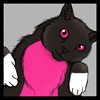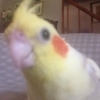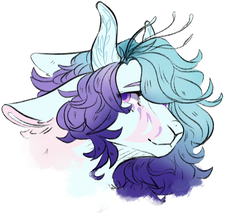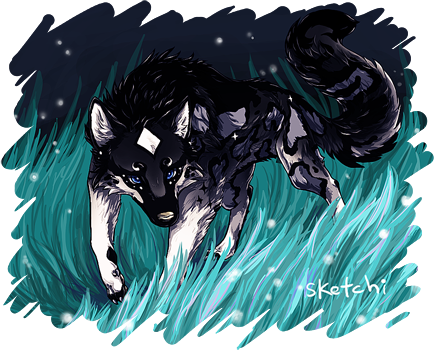Pound of Hope Fanclub
Re: Pound of Hope FanClub
You know what would be awesome?! A doodle-based character!! ^^ <33
Mood: Creative
Doing: Critiquing
Should be Doing: Project
Doing: Critiquing
Should be Doing: Project
Note:
***Looking for art of Prim,
paying well. Shoot me a PM and we can discuss something.
***I love critiquing
forms, PM me about it.
***Looking for art of Prim,
paying well. Shoot me a PM and we can discuss something.
***I love critiquing
forms, PM me about it.
Stay weird everyone. ;) ♥
-

Africa. - Posts: 8791
- Joined: Wed Aug 05, 2009 12:24 am
- My pets
- My items
- My wishlist
- My gallery
- My scenes
- My dressups
- Trade with me
Re: Pound of Hope FanClub
.Fae. wrote:You know what would be awesome?! A doodle-based character!! ^^ <33
I think I have some characters that might be along the lines of what you're thinking. :3

A mouse.

A swan.
How are these? I've had these sitting around for awhile, not sure what to do with them. XD
-

SSQM - Posts: 5396
- Joined: Fri Jan 29, 2010 2:51 pm
- My pets
- My items
- My wishlist
- My gallery
- My scenes
- My dressups
- Trade with me
Re: Pound of Hope FanClub
I'll donate some more soon ^^ And if you haven't already noticed I donated both Mocha & Pastel 8D
Besides I might get Corel Painter + a Wacom Tablet for christmas so I will make much more donations ^^
Besides I might get Corel Painter + a Wacom Tablet for christmas so I will make much more donations ^^
-

corgie - Posts: 19258
- Joined: Tue Nov 03, 2009 8:38 am
- My pets
- My items
- My wishlist
- My gallery
- My scenes
- My dressups
- Trade with me
Re: Pound of Hope FanClub
Star: Oh I'm sorry xD I really should have been mire clear on that xD I meant like normal lineart, but like with doodles on it or something xD Sorry, my fault, I'm terrible at explaining!
Mood: Creative
Doing: Critiquing
Should be Doing: Project
Doing: Critiquing
Should be Doing: Project
Note:
***Looking for art of Prim,
paying well. Shoot me a PM and we can discuss something.
***I love critiquing
forms, PM me about it.
***Looking for art of Prim,
paying well. Shoot me a PM and we can discuss something.
***I love critiquing
forms, PM me about it.
Stay weird everyone. ;) ♥
-

Africa. - Posts: 8791
- Joined: Wed Aug 05, 2009 12:24 am
- My pets
- My items
- My wishlist
- My gallery
- My scenes
- My dressups
- Trade with me
Re: Pound of Hope FanClub
kitten5862 wrote:Would anyone go for this one?
EDIT- Or this one?
Anyone? (:
-

kitten5862 - Posts: 2286
- Joined: Mon Mar 30, 2009 8:03 am
- My pets
- My items
- My wishlist
- My gallery
- My scenes
- My dressups
- Trade with me
Re: Pound of Hope FanClub
I might ^^
-

corgie - Posts: 19258
- Joined: Tue Nov 03, 2009 8:38 am
- My pets
- My items
- My wishlist
- My gallery
- My scenes
- My dressups
- Trade with me
Re: Pound of Hope FanClub
Someone PMed me about chincharu info, so I figured I'd post it here, since I don't have a chincharu thread and so anybody going for a chincharu can use it. c:
hincharu aren't a hybrid; they're an entirely new species on their own. :3 They are rodents, and about the size of a dwarf rabbit. Despite this, they can adapt to many different regions, and their fur color usually reflects this. (Dark brown would normally live in a forested area or similar, while pure white or shades of grey would be found on the tundra or snowy areas.) Their fur is also longer or shorter depending on the regions, and in the winter, arctic chincharu grow fluffy coats in diluted color patterns of their summer fur. With large eyes, they have fair eyesight, though nothing matched their hearing. Their ears are long and thing, with a pointed tip, and they are able to rotate and angle them to pinpoint a sound. Since they are 'prey' animals, this helps them, and their small, sensitive paws help sense vibrations when they're on the ground, but their hearing is most reliable.
Chincharu normally dig burrows no matter the climate, though they vary in shapes, sizes, and even materials. A forest chincharu may burrow under the roots of a large oak and line the floor with plenty of feathery moss, while a tundra chincharu may burrow under a slab of rock, or out in the open entirely. BUT, some chincharu prefer the treetops (especially ones that live in rainforests or woodland), and instead collect grasses and moss which they tuck into tree hollows or between sturdy branches. Desert chincharu do this as well, but make their homes in cacti, where they are safe from predators. When they sleep, a lot of chincharu curl up in a small ball with their head tucked either on or under the fluffy tips of their tails.
Males are usually larger, with longer tails and ears than females, though besides that not many characteristics are different. Both have small claws as well.
They are very much vegetarians, often keeping caches of rich nuts and plump berries, and also enjoy seeds and certain flowers. They also love shiny objects or colorful feathers, pebbles, or other objects, and males will collect these in the springtime, hoping to catch the eye of a female chincharu and impress them. XD
Baby chincharu are called chinchi, and are born small and fluffy, eyes closed, but ears twitching and taking in all of the sound around them. Often chinchi are born with very pale fur, that later darkens into their true colors.
However, chincharu are very diverse when it comes to how they live. Some choose to live alone, though this can be challenging, others prefer living in family groups before moving on, and some, though rare live together in large groups.
Uhm, I think that's it, a bunch of random facts I thought up on them :3
If you want to know more, just let me know, though I'm still changing some stuff around, so if you have an idea that doesn't fit this all the way, go ahead. Nothing's -really- set yet, since I haven't really thought out specifics. C:
hincharu aren't a hybrid; they're an entirely new species on their own. :3 They are rodents, and about the size of a dwarf rabbit. Despite this, they can adapt to many different regions, and their fur color usually reflects this. (Dark brown would normally live in a forested area or similar, while pure white or shades of grey would be found on the tundra or snowy areas.) Their fur is also longer or shorter depending on the regions, and in the winter, arctic chincharu grow fluffy coats in diluted color patterns of their summer fur. With large eyes, they have fair eyesight, though nothing matched their hearing. Their ears are long and thing, with a pointed tip, and they are able to rotate and angle them to pinpoint a sound. Since they are 'prey' animals, this helps them, and their small, sensitive paws help sense vibrations when they're on the ground, but their hearing is most reliable.
Chincharu normally dig burrows no matter the climate, though they vary in shapes, sizes, and even materials. A forest chincharu may burrow under the roots of a large oak and line the floor with plenty of feathery moss, while a tundra chincharu may burrow under a slab of rock, or out in the open entirely. BUT, some chincharu prefer the treetops (especially ones that live in rainforests or woodland), and instead collect grasses and moss which they tuck into tree hollows or between sturdy branches. Desert chincharu do this as well, but make their homes in cacti, where they are safe from predators. When they sleep, a lot of chincharu curl up in a small ball with their head tucked either on or under the fluffy tips of their tails.
Males are usually larger, with longer tails and ears than females, though besides that not many characteristics are different. Both have small claws as well.
They are very much vegetarians, often keeping caches of rich nuts and plump berries, and also enjoy seeds and certain flowers. They also love shiny objects or colorful feathers, pebbles, or other objects, and males will collect these in the springtime, hoping to catch the eye of a female chincharu and impress them. XD
Baby chincharu are called chinchi, and are born small and fluffy, eyes closed, but ears twitching and taking in all of the sound around them. Often chinchi are born with very pale fur, that later darkens into their true colors.
However, chincharu are very diverse when it comes to how they live. Some choose to live alone, though this can be challenging, others prefer living in family groups before moving on, and some, though rare live together in large groups.
Uhm, I think that's it, a bunch of random facts I thought up on them :3
If you want to know more, just let me know, though I'm still changing some stuff around, so if you have an idea that doesn't fit this all the way, go ahead. Nothing's -really- set yet, since I haven't really thought out specifics. C:
-

bangarain - Posts: 7527
- Joined: Fri May 15, 2009 11:27 am
- My pets
- My items
- My wishlist
- My gallery
- My scenes
- My dressups
- Trade with me
Re: Pound of Hope FanClub
@kitten: They're both really cute. More people might be swayed towards the blue one, but the pink one would be my pick. 
@Fae: Oh okay, I see now. ^^
Edit: Or Fae, maybe if a character looked like it had lined paper for the coloring of it's fur and then a bunch of doodles! Is that what you maybe had in mind? *is excited*
@Fae: Oh okay, I see now. ^^
Edit: Or Fae, maybe if a character looked like it had lined paper for the coloring of it's fur and then a bunch of doodles! Is that what you maybe had in mind? *is excited*
-

SSQM - Posts: 5396
- Joined: Fri Jan 29, 2010 2:51 pm
- My pets
- My items
- My wishlist
- My gallery
- My scenes
- My dressups
- Trade with me
Re: Pound of Hope FanClub
Hmm, yeah, it'd be something like that ^^ Paper background, white background, black background, any would be cool really ^^
Mood: Creative
Doing: Critiquing
Should be Doing: Project
Doing: Critiquing
Should be Doing: Project
Note:
***Looking for art of Prim,
paying well. Shoot me a PM and we can discuss something.
***I love critiquing
forms, PM me about it.
***Looking for art of Prim,
paying well. Shoot me a PM and we can discuss something.
***I love critiquing
forms, PM me about it.
Stay weird everyone. ;) ♥
-

Africa. - Posts: 8791
- Joined: Wed Aug 05, 2009 12:24 am
- My pets
- My items
- My wishlist
- My gallery
- My scenes
- My dressups
- Trade with me
Re: Pound of Hope FanClub
Guess what little chilluns? 8D
My friend and I decided we hadn't done fresh donations for a while; so we're working our way through our Fantasy Drop, lmao. xD So far we have a gryphon with only vestigial wings, a weird buffalo/cat/snake thingy, and an adolescent pup whose a gladiator. xDD
My friend and I decided we hadn't done fresh donations for a while; so we're working our way through our Fantasy Drop, lmao. xD So far we have a gryphon with only vestigial wings, a weird buffalo/cat/snake thingy, and an adolescent pup whose a gladiator. xDD

-

iBrevity - Posts: 8573
- Joined: Wed Jan 28, 2009 3:35 pm
- My pets
- My items
- My wishlist
- My gallery
- My scenes
- My dressups
- Trade with me
Who is online
Users browsing this forum: Amazonbot [Bot] and 8 guests







